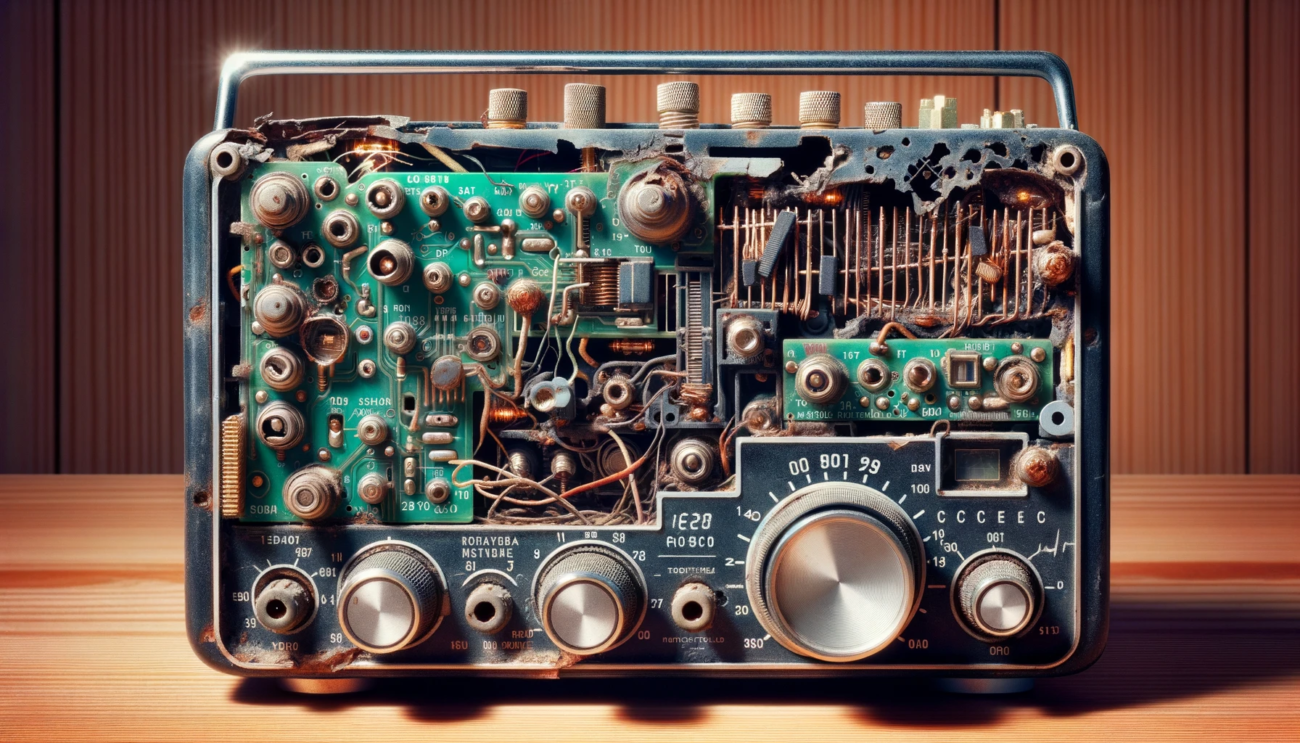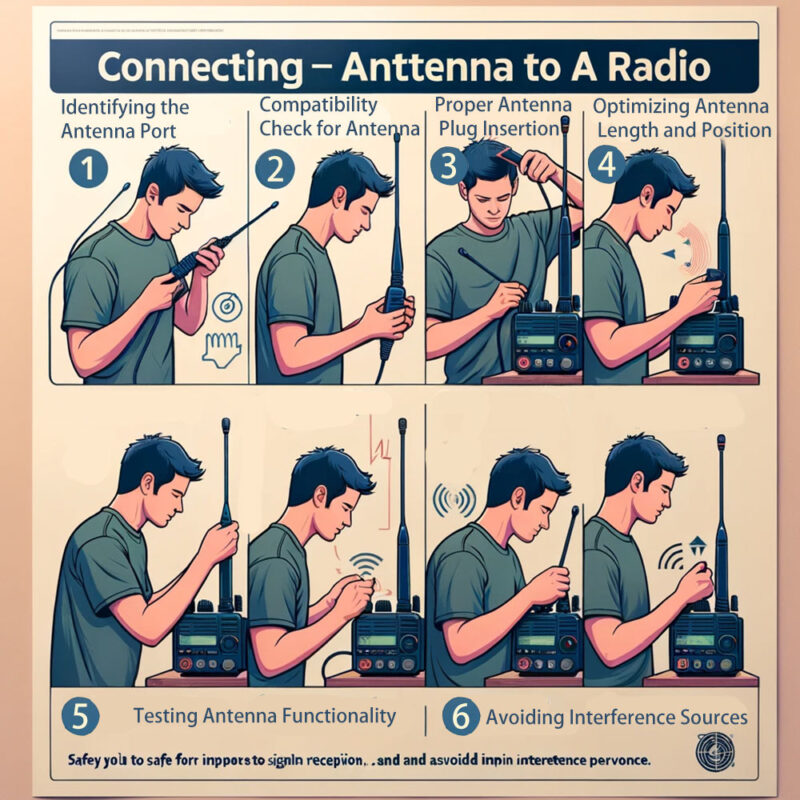Summary:
Operating a radio without an antenna may lead to poor reception and potential damage to the radio’s internal circuitry over time. This article explores the implications of using a radio without an antenna, emphasizing the critical role of antennas in capturing electromagnetic waves, which in turn helps improve signal quality and extend transmission distance. The discussion clarifies the potential risks involved and delves into the importance of antennas in radio communication.
Does using a radio without an antenna have any negative effects?
The question of the detriments of using a radio without an antenna often arises among radio enthusiasts and users. This article aims to elucidate the importance of antennas in radio operation and the possible impacts thereof.
Will a radio be damaged if it operates without an antenna?
Without an antenna, using a radio can harm its internal circuitry over time. The antenna carries radio waves, easing signal transmission and reception. In the absence of an antenna, increased electrical stress may affect the radio, possibly causing overheating or other internal damage. The design of the radio and the duration it operates without an antenna can influence the extent of damage.
Is it Harmful to Use a Two-Way Radio Without an Antenna?
Two-way radios are crafted for robust communication, often utilized in professional settings. Unlike standard radios, they transmit and receive signals, enabling interactive discussions among users. Antennas are pivotal in this communication process, aiding clear signal transmission and reception. Operating a two-way radio without an antenna can severely impair its communication capacity.
Without an antenna, two-way radios might suffer from poor signal quality, rendering communication unclear or impossible. Moreover, the absence of an antenna can potentially cause internal damage over time due to electrical overstress. In professional scenarios, this communication failure could lead to severe miscommunications, posing risks especially in urgent situations.
Furthermore, the extent of potential damage or performance degradation largely hinges on the radio’s design and the surrounding electromagnetic environment. Some modern two-way radios feature built-in antennas or alternative signal processing techniques to mitigate these issues. However, for optimal performance and to circumvent any potential damage or communication mishaps, it’s advisable to always use a two-way radio with a suitable antenna.

Why is an antenna needed?
An antenna is a key component in radio equipment, mainly used to capture electromagnetic waves from the surrounding environment.1 It converts these waves into electrical signals that the radio can process, enabling communication or reception. Moreover, an antenna plays a vital role in transmitting signals, expanding the coverage of radio communication. Without an antenna, a radio’s ability to receive or transmit signals is severely hindered, possibly leading to poor communication or total loss of functionality.
Why is antenna important in radio?
The antenna’s value in radio transcends receiving and sending messages. It enhances signal quality, and reduces interference and static, fostering clearer communication. Additionally, with a properly adjusted antenna, a radio can greatly extend its transmission range, enabling long-distance communication. Amid a sea of electromagnetic waves, effective radio communication relies on the radio focusing on specific frequencies while rejecting others, courtesy of the antenna’s filtering function.
Can a radio receiver work without an antenna?
A radio receiver might function to a certain extent without an antenna, but its performance will be severely impacted. The antenna captures electromagnetic waves required for signal processing in the radio.
Without an antenna, the radio receiver’s ability to capture these waves is diminished, leading to weak signal reception or none at all. The functionality of a radio receiver heavily relies on the antenna, and without it, the performance may degrade significantly or result in complete loss of functionality in severe cases.
How does an antenna work in a radio?
The primary function of an antenna in a radio is transduction—it converts electromagnetic waves into electrical impulses and vice versa. It collects electromagnetic waves from the surroundings, transforming them into electrical impulses that the radio circuitry processes to produce music.
Similarly, the antenna transmits electrical impulses into the surrounding environment, converting them back into electromagnetic waves during transmission. A well-designed antenna can significantly enhance the radio’s transmission and reception qualities, ensuring improved clarity and a longer communication range.

What are the potential risks of operating a radio without an antenna?
Operating a radio without an antenna poses several risks.
Firstly, the radio may experience electrical overstress due to the absence of a proper conduit for electromagnetic waves, potentially leading to internal damage over time.
Secondly, the lack of an antenna results in poor signal reception and transmission, which can frustrate the user and limit the radio’s functionality.
Lastly, in some radio designs, the absence of an antenna may lead to higher power consumption as the radio struggles to capture and process signals, possibly leading to faster battery depletion.
What can be used as an alternative to a traditional antenna?
While conventional antennas aim for optimal signal transmission and reception, other options exist when they are unavailable or unsuitable.
One can employ internal antennas integrated within the radio equipment, or utilize digital signal processing techniques to enhance signal reception.
Moreover, though they may not match the performance level of conventional antennas, temporary alternatives like improvised antennas crafted from metal wires or other conductive materials serve as viable options.
How to properly connect an antenna to your radio?
Properly connecting an antenna to your radio is crucial for ensuring optimal performance and minimizing potential risks. Here are the steps for correct antenna connection:
- Identify the antenna port on your radio, usually marked as ‘ANT’ or ‘Antenna’.
2. Ensure the antenna you are using is compatible with your radio and is designed for the frequency range your radio operates on.
3. Securely insert the antenna plug into the radio’s antenna port.
4. If your antenna is adjustable, extend it fully and position it vertically for better signal reception.
5. Test the radio to ensure the antenna is functioning correctly, adjusting the antenna position for better signal reception as needed.
6. Avoid placing the antenna near metal objects or electronic devices that may cause interference. By following these steps, you can ensure a safe and effective connection between your antenna and your radio, leading to improved communication and overall radio performance.


